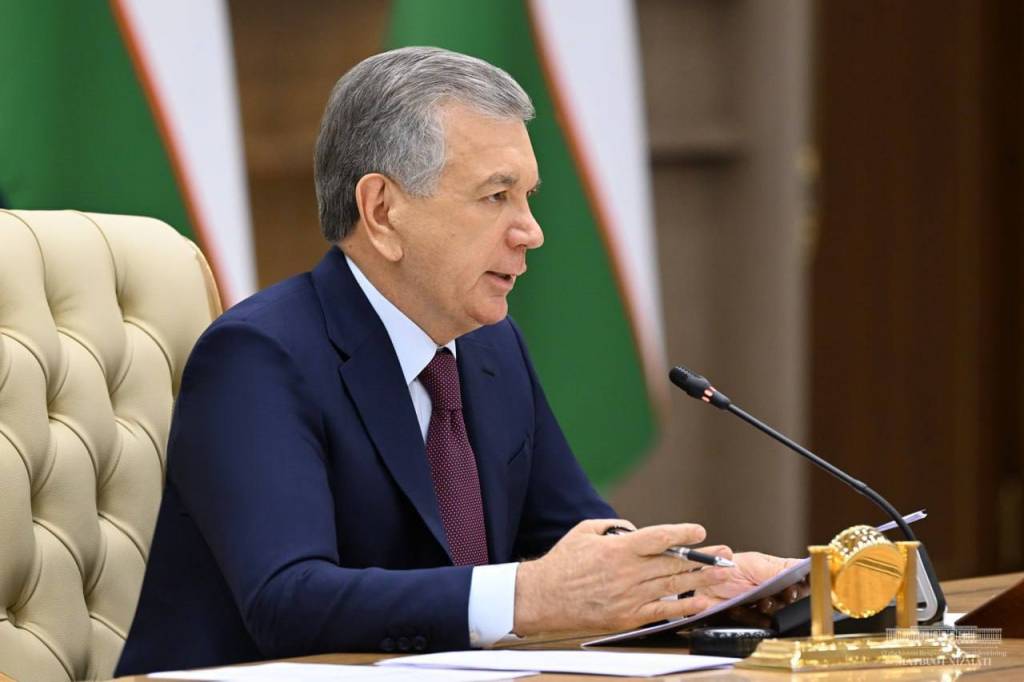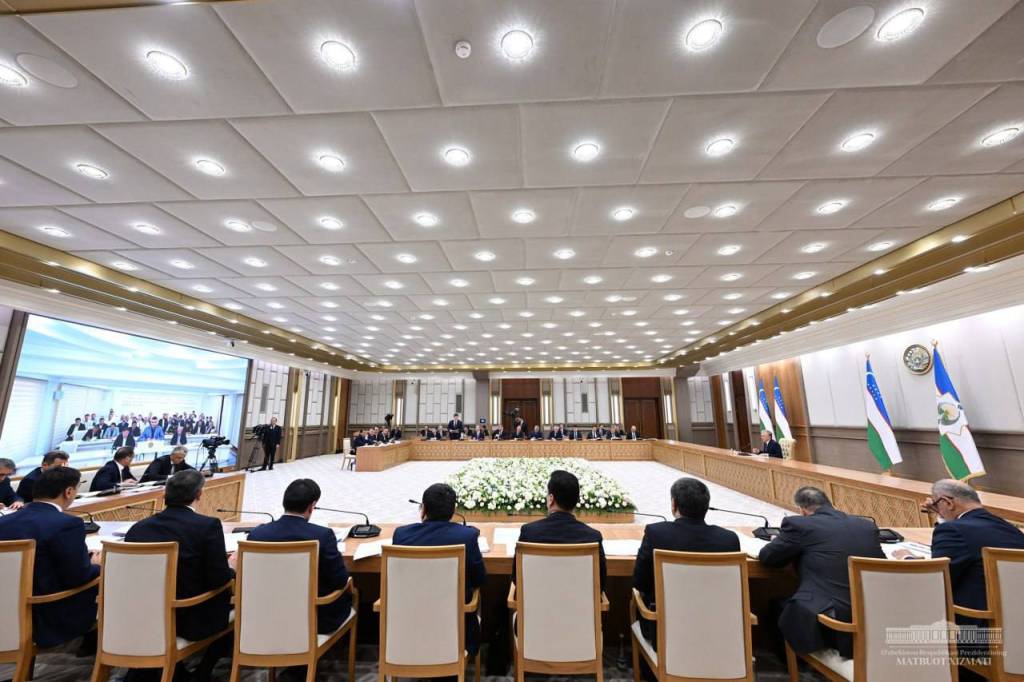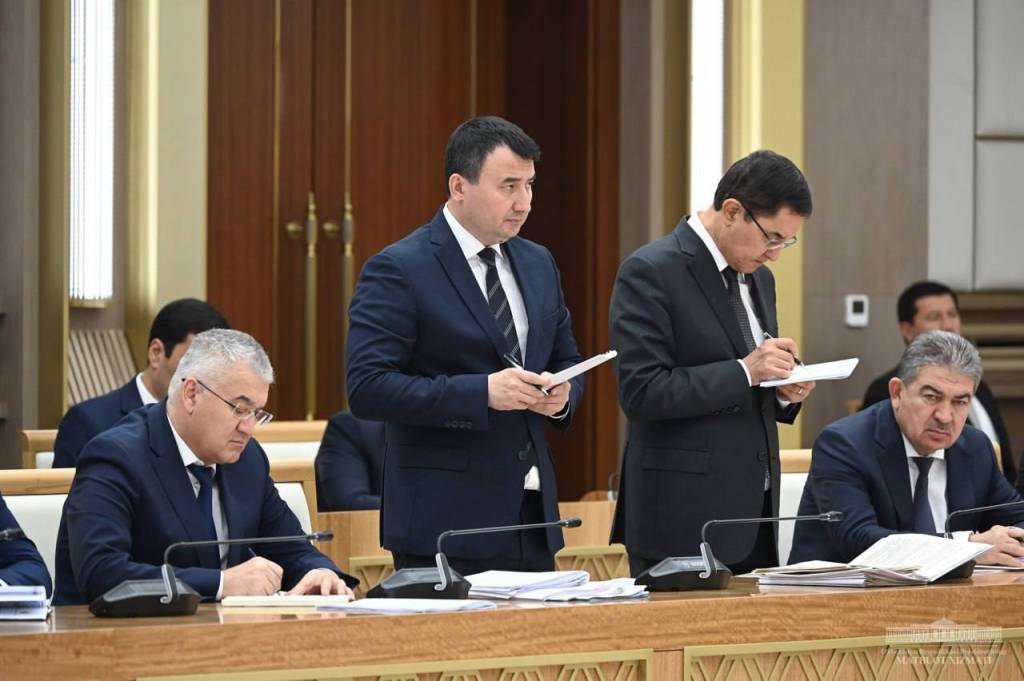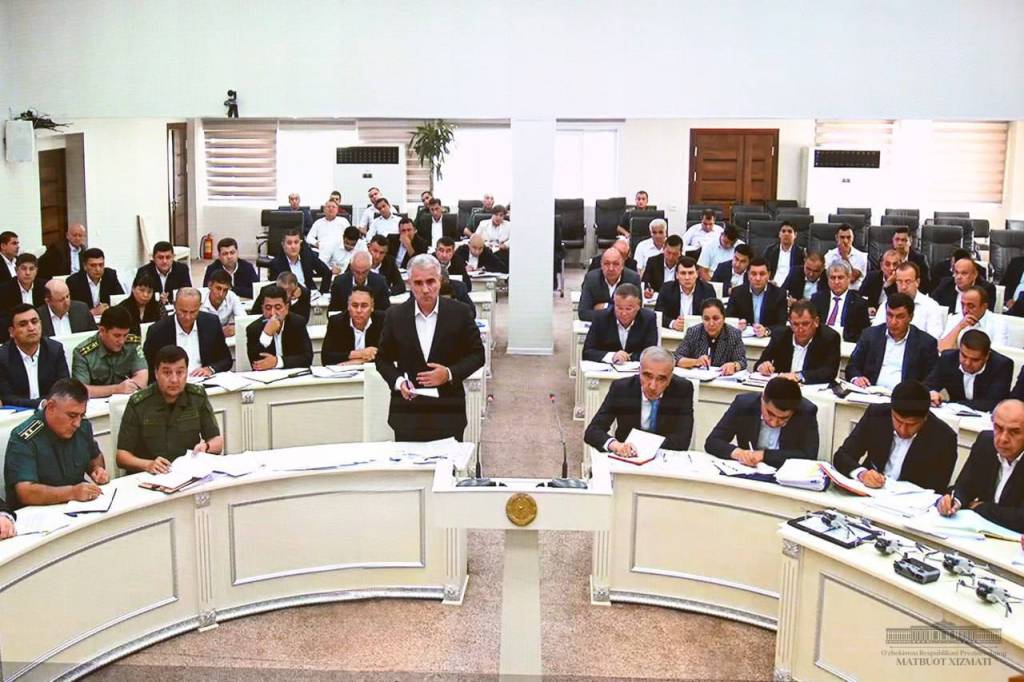WNAM MONITORING: President Shavkat Mirziyoyev chaired a meeting on measures for the economic development of districts, the introduction of alternative energy sources, and the creation of attractive conditions for industrial enterprises.
As is known, Uzbekistan has established the experience of Saykhunabad, Uychi, Zarbdor, and Gijduvan in employing the population and developing entrepreneurship. At the meeting, the effectiveness of work in this direction was considered.
For example, within the framework of Saykhunabad experience, the task is to implement 10 micro-projects in each mahalla. Thanks to this, 132 thousand micro-projects have been launched in the country, employing 242 thousand people. However, the work is slow in 46 mahallas of 26 districts.
Based on the Uychi experience, which consists of banks working closer with their clients, 500,000 new jobs have been created in the country. However, the results in 15 districts and cities do not meet expectations.

The Gijduvan experience aims to create multi-story industrial buildings in a thousand mahallas, while the Zarbdor experience aims to create driver projects at places.
It was emphasized that the experience of these 4 districts is state policy, and strict measures will be taken against managers who allow delays in their implementation. Specific KPIs will be defined for the persons responsible for each experiment, and strict control will be established over their implementation.
The main issues on the meeting’s agenda were creating more favorable conditions for entrepreneurs, specializing each district, and rationalizing energy use, using the Bukhara region as an example. Government members, heads of economic sectors, and hokims from other regions also attended the event.
The Head of state visited Bukhara region from May 31 to June 1. After the trip, the region was allocated 1.4 trillion UZS. Today, a resolution was signed, allocating an additional $60 million for the development of entrepreneurship and $40 million for the development of infrastructure.

At the meeting, Bukhara’s capabilities were analyzed in five areas.
The first is the development of the service sector.
The region has 584 guest houses, 122 catering enterprises, 18.5 thousand retail outlets, and 30 health and fitness centers. Bukhara cuisine is widely renowned, but the number of canteens and restaurants per thousand residents here is 10 times less than in Samarkand. 103 design organizations and 2,372 construction organizations are not fully involved. It is possible to develop master plans for the regions and place retail and service outlets.
In this regard, a decision was made to develop the service sector in 62 residential areas and 54 streets of Bukhara. These areas will specialize in catering, health improvement, hotel business, handicrafts, trade, and services. A total of 4 thousand enterprises will be created, employing 6 thousand people.
The Head of state supported the proposal to simplify land allocation in industrial zones, including for the service sector. From now on, a separate type of loan will be introduced to purchase service sector facilities – service mortgages.

At the meeting, special attention was paid to the issue of rational energy use. It was noted that Bukhara has the opportunity to save 900 million kilowatts of electricity and 400 million cubic meters of gas, which is 20 percent of the total regional consumption. In particular, by upgrading equipment at 42 large enterprises, it is possible to save up to 25 percent on electricity and gas.
The largest consumer is the Amu-Bukhara Canal. Upgrading the pumps saves 200 million kilowatts, or 204 billion UZS, per year. But this is not enough.
It was noted that installing solar-powered pumping stations with a capacity of 100 megawatts and an energy storage system with a capacity of 100 megawatts at the enterprise would reduce electricity consumption from the general network by 25 percent and the average daily tariff – by 12.5 percent.
There is also the possibility of installing solar panels with a capacity of at least 3 kilowatts on 200,000 real estate objects, creating a capacity of 600 megawatts. This would save another 20 percent of electricity consumption in the region.

In this regard, the Ministry of Energy and regional and district officials have been tasked with installing solar panels at 4,000 sites by the end of the year. The need to expand opportunities for purchasing panels has been noted.
Measures have been identified for the timely delivery of liquefied gas to the population with the broad involvement of the private sector.
Three large gas chemical complexes and 10 solar and wind power plants are being built in Bukhara region. They will require spare parts for $1 billion. However, many enterprises produce the same type of products and do not work on innovations.
The region produces 1.5 million tons of fruits and vegetables, which is two times more than Bukhara needs. However, only 11 percent of these are processed, and 30 percent spoil during transportation. The capacity of four small agro-logistics centers in the region allows the processing of only 66 thousand tons of products.
In this regard, the President emphasized the need for each district to specialize in industries.

For example, in Jandar district, about 3 thousand women have sufficient experience in home textiles. In Vabkent district, grapes, flowers, and seedlings are grown using the “voish” method. In Bukhara district, a new enterprise with a processing capacity of 27 thousand tons of fruits and vegetables was operated.
Considering these examples, a program covering the issues of raw materials, infrastructure, personnel, and the market was developed based on each district’s specialization.
Professional personnel are needed to implement these plans and goals. However, in most cases, vocational training is carried out within the existing teaching staff without taking into account the labor market demand and the interests of young people. Only 2 percent of young people study in the dual form of education, and cooperation has been established with only 350 of the 30,000 enterprises in the region. As a result, admission to colleges and technical schools with a capacity of 28 thousand students does not reach 50 percent.

Therefore, educational buildings and premises not used to their total capacity will be directly leased to entrepreneurs. The funds received will be used to repair buildings and purchase equipment. It was noted that the only condition is to train young people in professions and provide them with work.
The biggest obstacle to working in the regions was incompetence in district organizations. KPIs have not been established for employees, digitalization has not been appropriately implemented, and innovation training lacks. In this regard, the ministries were instructed to improve their systems’ methodology, regulations, and digitalization.
At the meeting, information was heard from hokims of Bukhara region and districts, heads of spheres, and industry representatives.








